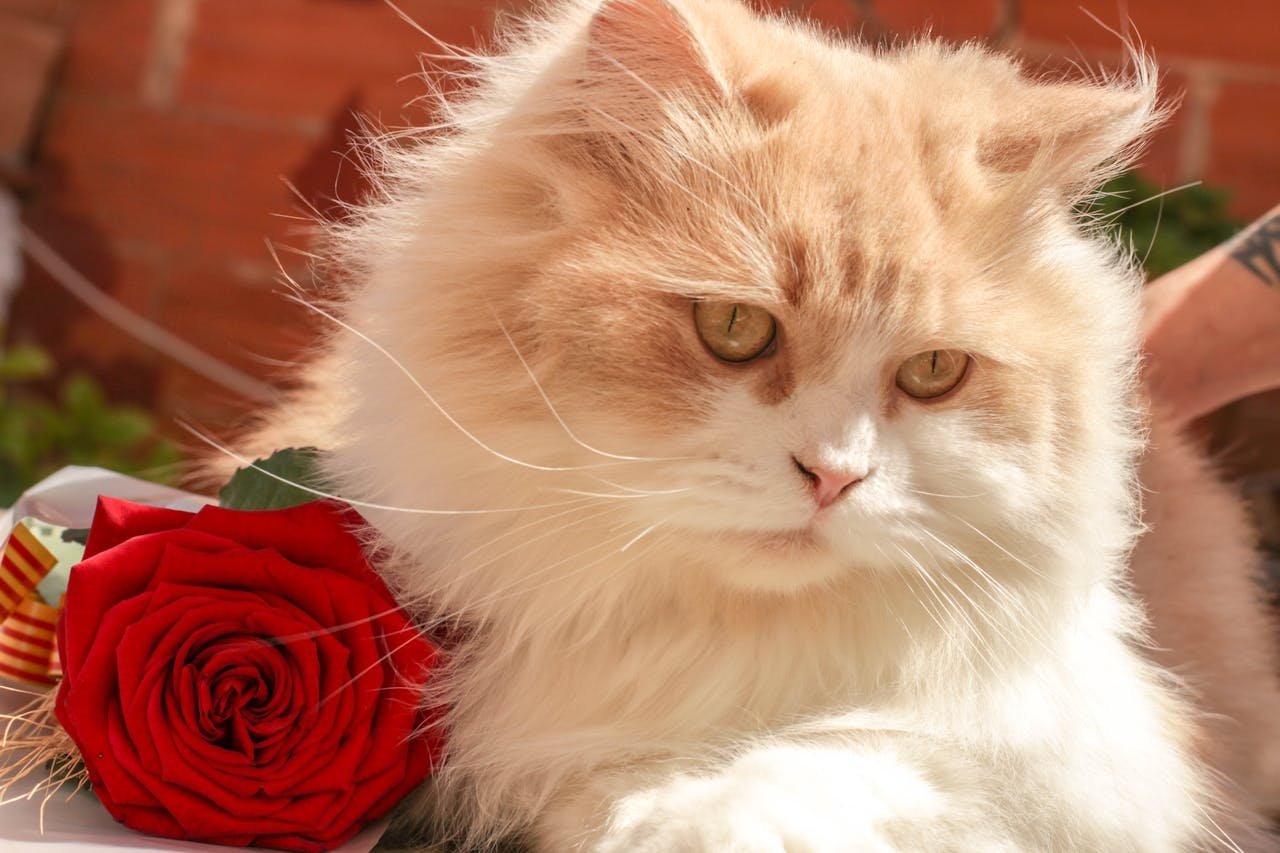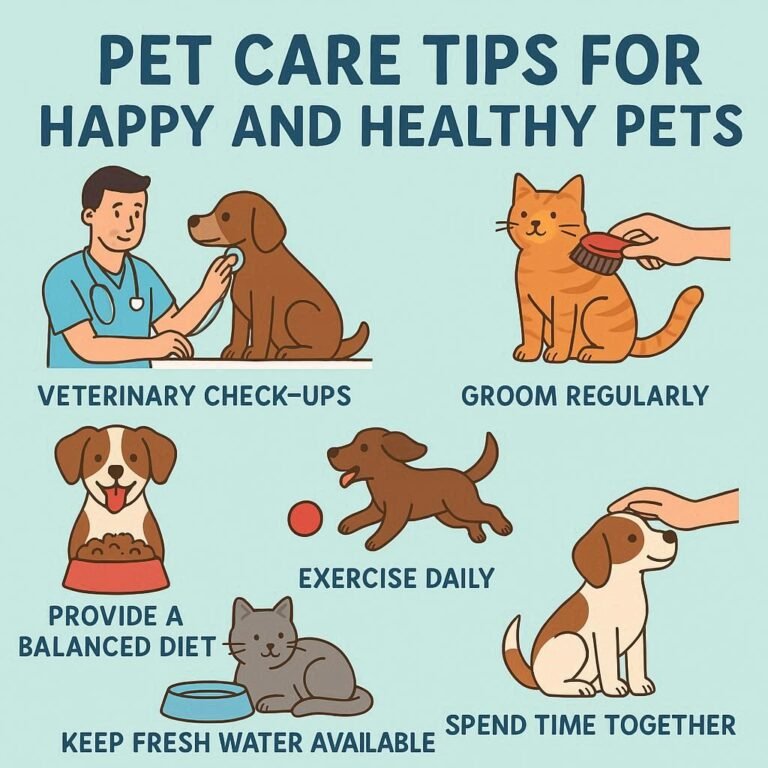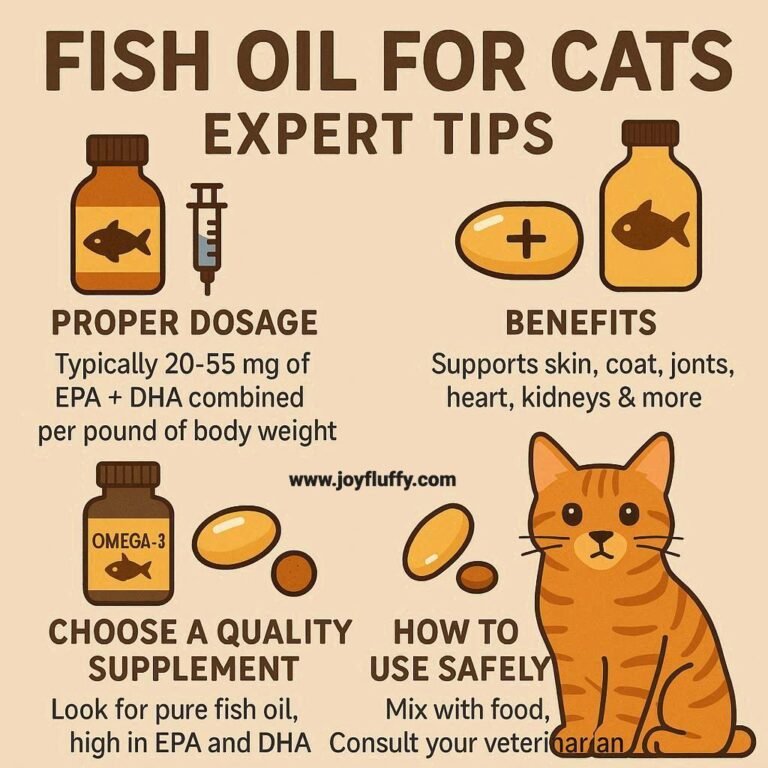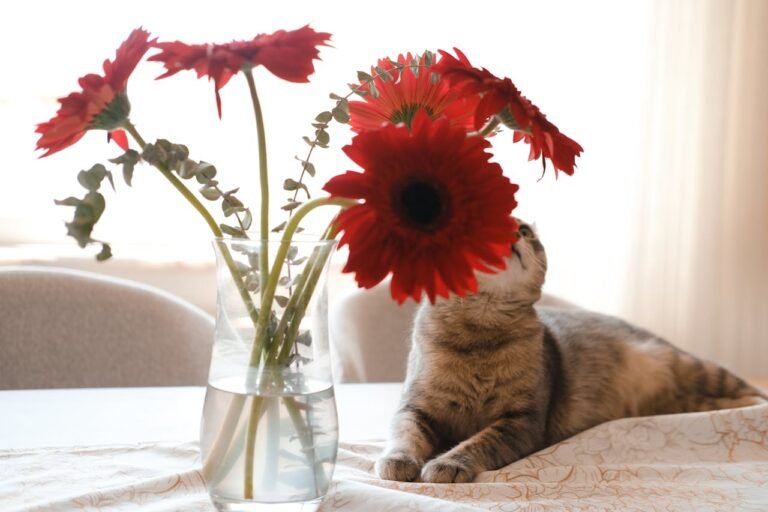Popular Cats Around the World: Which One Fits Your Lifestyle?
Choosing the right cat breed for your lifestyle is one of the most important decisions you’ll make as a pet owner. I’ve seen countless families struggle because they fell in love with a cat’s appearance without considering whether that breed’s personality and needs matched their daily routine. Through my years working at both veterinary clinics and animal shelters, I’ve learned that the secret to a happy cat-human relationship isn’t just about picking the cutest kitten—it’s about finding a cat breed that truly fits your lifestyle.
Why Matching Your Lifestyle to the Right Cat Breed Matters
Here’s something that might surprise you: according to the American Society for the Prevention of Cruelty to Animals, approximately 3.2 million cats enter shelters every year in the United States alone. After working with shelter organizations for years, I can tell you that many of these surrenders happen because families didn’t understand what they were getting into with certain popular cat breeds around the world.
Important Statistics
Research shows that 27% of cat adoptions fail within the first year due to lifestyle mismatches. The good news? This is completely preventable with proper breed selection and understanding.
When you choose a cat that matches your energy level, living space, and time availability, you’re setting both yourself and your feline friend up for success. Let me share what I’ve learned about some of the most popular cats around the world and how to determine which one fits your unique situation.
Understanding Your Lifestyle Before Choosing Popular Cats
Before we dive into specific breeds, let’s talk about you. I always tell my clients that honest self-assessment is crucial. Are you someone who works long hours? Do you have young children? Is your apartment small, or do you have a large house with a yard?
Key Lifestyle Factors to Consider
- Work Schedule: How many hours are you away from home each day?
- Activity Level: Are you energetic and playful, or do you prefer quiet evenings?
- Living Space: Apartment, house, or something in between?
- Family Composition: Living alone, with a partner, or with children?
- Grooming Commitment: How much time can you dedicate to brushing and maintenance?
- Experience Level: First-time cat owner or experienced with felines?
- Budget: Can you afford potential health care costs for certain breeds?
Popular Cats for Busy Professionals
If you’re working 40-plus hours a week, you need a cat that’s independent yet affectionate when you’re home. Let me introduce you to two popular cat breeds that thrive with working owners.
The Persian Cat: Elegant and Low-Energy
I’ve recommended Persian cats to countless busy professionals over the years. These gorgeous felines are the epitome of calm, dignified companionship. Unlike some high-energy breeds that demand constant attention, Persians are perfectly content lounging on the couch while you’re at work.
Perfect For: Apartment dwellers, people who work long hours, those who want a calm companion
Time Commitment: 15-20 minutes daily grooming required
Energy Level: Low (2 out of 10)
“I work as a software engineer with long days at the office. My Persian cat, Luna, is the perfect companion. She’s always there to greet me when I get home, but she never seems stressed about being alone during the day. The grooming does take time, but it’s become our bonding ritual.”
— Jennifer, New York City
However, I always warn potential Persian owners about the grooming commitment. Their luxurious long coat requires daily brushing to prevent matting. If you’re willing to spend 15-20 minutes each evening with a brush, you’ll have a devoted, serene companion.
Health Consideration: Persians are brachycephalic (flat-faced), which can lead to breathing difficulties and eye drainage. Make sure you’re prepared for potential veterinary costs and daily eye cleaning. Annual health care for Persians typically runs $500-$1,000 beyond basic care.
The British Shorthair: The Perfect Gentleman
If you want a low-maintenance version of the Persian’s calm temperament, let me introduce you to the British Shorthair. These round-faced beauties are among my favorite popular cats to recommend for busy lifestyles.
British Shorthairs are incredibly easygoing and don’t demand constant attention. They’re affectionate on their terms—they’ll sit beside you rather than on your lap, which many professionals appreciate. Their short, dense coat requires minimal grooming, usually just a weekly brush.
“British Shorthairs are exceptional for working professionals because they’re genuinely comfortable with independence. They won’t destroy your apartment out of boredom or separation anxiety. Their stable temperament makes them one of the most reliable breeds for predictable behavior.”
— Dr. Emily Chen, Feline Behavior Specialist
Perfect For: First-time cat owners, busy professionals, anyone wanting low-maintenance companionship
Time Commitment: 10 minutes weekly grooming
Energy Level: Low to Moderate (4 out of 10)
Popular Cat Breeds for Active Households
Now, if you’re someone who comes home from work ready to play, or if you have energetic kids, you need a completely different type of cat. Let me tell you about two breeds that absolutely thrive in active environments.
The Bengal Cat: A Miniature Leopard
Bengals are hands-down the most energetic cats I work with. These stunning spotted beauties are descended from Asian Leopard Cats, and they’ve retained much of that wild energy. If you’re considering a Bengal, you need to be honest with yourself about your activity level.
I’ve seen Bengals thrive in homes where owners set up cat trees, provide puzzle feeders, and dedicate at least 30-60 minutes daily to interactive play. These aren’t cats that will be content watching you watch TV. They want to be part of the action.
Perfect For: Very active individuals or families, those with large homes, experienced cat owners
Time Commitment: 30-60 minutes daily interactive play essential
Energy Level: Very High (9 out of 10)
Space Requirement: Minimum 800 square feet recommended
“We got our Bengal, Maverick, when my kids were 7 and 9. He’s been the perfect addition to our active family. He plays fetch, loves our obstacle course in the backyard, and can even be walked on a leash. But I’ll be honest—if we didn’t have the time and energy to keep him stimulated, it would be a disaster.”
— Michael, San Diego
Important Note: Some municipalities have restrictions on Bengal cats due to their wild heritage. Always check local regulations. Additionally, Bengals can be destructive if under-stimulated—think knocked-over plants, opened cabinets, and shredded curtains.
The Abyssinian: Curious and Athletic
Abyssinians are what I call the “eternal kittens” of the cat world. Even as adults, these sleek, muscular cats maintain their playful, curious nature. They’re slightly less intense than Bengals but still need an active household.
What I love about recommending Abyssinians is their social nature. They genuinely enjoy being involved in everything you do. Cooking dinner? Your Abyssinian will supervise from the counter. Working from home? Expect them to walk across your keyboard regularly.
Perfect For: Active singles or couples, work-from-home professionals, those who want an interactive companion
Time Commitment: 20-30 minutes daily play, constant mental stimulation
Energy Level: High (8 out of 10)
Training Tip: Abyssinians are highly intelligent and can learn tricks, play fetch, and even walk on leashes. Channel their intelligence into positive activities to prevent boredom-related behavior problems.
Best Popular Cats for Families with Children
Choosing a cat for a family with children requires extra consideration. You need a breed with patience, tolerance, and ideally, a playful nature that matches your kids’ energy. Based on my experience, these two breeds consistently excel in family environments.
The Maine Coon: Gentle Giants
Maine Coons are the largest domestic cat breed, and they have personalities as big as their bodies. I call them “dog-like cats” because they’re loyal, trainable, and incredibly patient with children.
What makes Maine Coons exceptional family cats is their gentle nature combined with their playfulness. They can weigh up to 25 pounds, but they’re remarkably gentle with small children. I’ve watched Maine Coons tolerate being dressed up, pushed in doll strollers, and included in tea parties—all with remarkable grace.
Perfect For: Families with children of all ages, multi-pet households, those wanting a social, interactive cat
Time Commitment: 15 minutes daily grooming, plenty of playtime
Energy Level: Moderate (6 out of 10)
Size: Males 13-25 pounds, Females 8-18 pounds
“Maine Coons have an exceptional temperament for families. Their size can be intimidating, but they’re remarkably aware of their bodies and gentle with small children. In 20 years of practice, I’ve never treated a child for an aggressive Maine Coon incident.”
— Dr. Robert Thompson, Veterinarian specializing in family pet dynamics
One thing to consider: Maine Coons take longer to mature than other breeds. They don’t reach full size until 3-5 years old, which means you’ll have an extra-long “kitten phase” of playful energy.
The Ragdoll: Living Up to Their Name
Ragdolls earned their name because they literally go limp when you pick them up. This docile, affectionate breed is one of the most popular cats for families, and for good reason.
I’ve recommended Ragdolls to families with young children because of their incredibly patient temperament. They’re not easily startled, they tolerate handling well, and they actively seek out human companionship. Unlike some cats that hide when children visit, Ragdolls usually want to be part of the action.
Perfect For: Families with young children, first-time cat owners, those wanting a cuddly, affectionate cat
Time Commitment: 10-15 minutes daily grooming
Energy Level: Low to Moderate (4 out of 10)
“Our Ragdoll, Snowball, has been amazing with our three kids. She lets them carry her around (properly supported, of course), sleeps in their beds, and has never once scratched or bitten, even when the toddler accidentally stepped on her tail. She’s the most patient cat I’ve ever seen.”
— Amanda, mother of three, Boston
Parent Tip: Even with patient breeds like Ragdolls, always supervise interactions between young children and cats. Teach children proper handling techniques and respect for the cat’s space. This creates a foundation for lifelong positive relationships with animals.
Popular Cat Breeds Perfect for Apartment Living
Living in an apartment doesn’t mean you can’t have a cat—you just need to choose the right one. The key factors are noise level, space requirements, and energy that can be satisfied indoors.
The Russian Blue: Quiet and Adaptable
Russian Blues are my go-to recommendation for apartment dwellers, especially those in buildings with thin walls. These elegant silver-coated cats are known for being one of the quietest breeds. They rarely vocalize unless they have something important to say.
What makes Russian Blues ideal for apartments is their moderate energy level and adaptability. They’re playful but not destructive, active but not hyperactive. They’re perfectly content in smaller spaces as long as they have vertical territory like cat trees.
Perfect For: Apartment dwellers, quiet households, single professionals, those wanting a loyal companion
Time Commitment: 15-20 minutes daily play and interaction
Energy Level: Moderate (5 out of 10)
Noise Level: Very Low
Russian Blues are also known for being somewhat reserved with strangers but deeply bonded to their owners. They’re not the cats that will immediately greet your dinner guests, but they’ll be your shadow when you’re home alone.
The Scottish Fold: Compact and Charming
Scottish Folds, with their distinctive folded ears, are adorable and well-suited to apartment life. They’re moderately active and enjoy play sessions but are equally content to curl up in a sunny spot.
Perfect For: Small apartments, seniors, those wanting a sweet-natured, adaptable cat
Time Commitment: 15 minutes daily grooming and play
Energy Level: Moderate (5 out of 10)
Critical Health Information: Scottish Folds carry a genetic mutation that affects cartilage throughout their bodies, not just their ears. This can lead to painful arthritis and joint problems, a condition called osteochondrodysplasia. As a veterinarian, I must stress the importance of getting Scottish Folds only from responsible breeders who screen for these issues and provide health guarantees. Be prepared for potentially higher veterinary costs as they age.
Best Popular Cats for First-Time Owners
If you’ve never owned a cat before, you want a breed that’s forgiving of beginner mistakes, has predictable behavior, and doesn’t have complex care requirements.
The American Shorthair: Classic and Reliable
American Shorthairs are the quintessential family cat. They’re what I call “goldilocks cats”—not too energetic, not too lazy, not too needy, not too independent. They’re just right for most households.
What I love about recommending American Shorthairs to first-time owners is their robust health, low-maintenance grooming, and balanced temperament. They’re adaptable, friendly without being clingy, and generally healthy cats with lifespans of 15-20 years.
Perfect For: First-time cat owners, families, anyone wanting a low-maintenance, healthy cat
Time Commitment: 10 minutes weekly grooming, regular play sessions
Energy Level: Moderate (5 out of 10)
Health: Generally robust with few breed-specific issues
Domestic Shorthair: The Shelter Star
While not technically a breed, I have to mention Domestic Shorthairs—the mixed-breed cats you’ll find in shelters. In my years working with rescue organizations, I’ve seen thousands of incredible Domestic Shorthairs that make phenomenal pets for first-time owners.
The advantage of adopting a Domestic Shorthair from a shelter is that you can assess the cat’s actual personality rather than relying on breed stereotypes. Shelter staff can tell you if a cat is energetic or calm, social or independent, vocal or quiet.
Perfect For: First-time owners, budget-conscious adopters, those wanting to save a life
Adoption Fee: Typically $50-$150 (includes spay/neuter, vaccinations)
Variety: Every personality type imaginable
Why Consider Shelter Cats?
Shelter cats often come already spayed/neutered, vaccinated, and temperament-tested. You’re saving a life while getting a healthy, assessed cat at a fraction of purebred costs. Many of the best cats I’ve known were shelter Domestic Shorthairs.
Popular Cats for People with Allergies
Let me be clear: there’s no such thing as a truly hypoallergenic cat. However, some breeds produce less of the Fel d 1 protein that causes most cat allergies. I’ve helped many allergy sufferers find cats they can live with comfortably.
Medical Disclaimer: Before getting any cat, consult with your allergist. Spend time with the specific breed you’re considering to test your reaction. Individual cats within a breed can vary in allergen production.
The Siberian Cat: Nature’s Allergy Solution
Siberians are remarkable cats for allergy sufferers. Studies show that approximately 75% of Siberians produce lower levels of Fel d 1 protein. I’ve seen clients with moderate cat allergies live comfortably with Siberians after years of thinking cat ownership was impossible.
Beyond their allergy-friendly qualities, Siberians are wonderful companions. They’re playful, loyal, and incredibly affectionate. They’re also surprisingly dog-like—many Siberians enjoy playing fetch and can be leash-trained.
Perfect For: Allergy sufferers, active families, those wanting a loyal, playful companion
Time Commitment: 15-20 minutes daily grooming (they have thick triple coats)
Energy Level: Moderate to High (7 out of 10)
Allergen Level: Lower than most breeds (but test first!)
“I’d been allergic to cats my whole life, but after testing with a Siberian breeder’s cats and having minimal reaction, we took the plunge. Three years later, I have zero regrets. My allergies are manageable with an air purifier, and I finally have the cat companion I always wanted.”
— David, Chicago
Allergy Management Tips: Even with lower-allergen breeds, maintain good practices: use HEPA air purifiers, keep bedrooms cat-free zones, wash hands after petting, and consider allergy shots if you’re serious about cat ownership.
The Balinese: The Elegant Alternative
Balinese cats are essentially long-haired Siamese, and like Siberians, they produce less Fel d 1 protein than many other breeds. They’re incredibly beautiful with their silky coats and striking blue eyes.
Balinese cats are social, vocal, and demanding of attention. If you want a cat that will “talk” to you and follow you everywhere, the Balinese is perfect. However, they’re not ideal if you want a quiet, independent cat.
Perfect For: Allergy sufferers who want an interactive, social cat
Time Commitment: 15 minutes daily grooming, lots of interaction
Energy Level: High (7 out of 10)
Vocalization: Very High (they love to “chat”)
Understanding Health Considerations for Popular Cat Breeds
One crucial aspect of choosing the right cat breed is understanding potential health issues. As a veterinarian, I’ve seen how breed-specific health problems can impact both the cat’s quality of life and your financial situation.
General Health Guidelines: Purebred cats often have higher rates of genetic health issues compared to mixed breeds. Always ask breeders about health screening, genetic testing, and health guarantees. Request to see health certificates for both parents.
Here’s what I’ve observed in my practice regarding common health issues in popular cat breeds:
Breed-Specific Health Considerations
- Persians: Brachycephalic syndrome (breathing difficulties), polycystic kidney disease, eye drainage issues. Annual health costs: $800-$1,500 beyond routine care.
- Maine Coons: Hypertrophic cardiomyopathy (heart disease), hip dysplasia, spinal muscular atrophy. Responsible breeders screen for these. Annual health costs: $500-$1,000.
- Scottish Folds: Osteochondrodysplasia (painful joint disease), ear infections due to folded ears. This is a significant concern that potential owners must understand. Annual health costs: $700-$2,000.
- Siamese/Balinese: Progressive retinal atrophy, dental issues, amyloidosis. Generally healthy but require regular dental care. Annual health costs: $400-$800.
- Bengals: Relatively healthy but can have heart disease and progressive retinal atrophy. Annual health costs: $400-$700.
“Understanding breed-specific health issues isn’t about avoiding certain breeds—it’s about being prepared. When owners know what to watch for, we catch problems early and manage them effectively. The key is working with responsible breeders who health-test their breeding cats.”
— Dr. Lisa Anderson, Feline Internal Medicine Specialist
The True Cost of Popular Cat Breeds
Let’s talk honestly about money. The purchase price of a cat is just the beginning. I always tell potential owners to consider lifetime costs, not just the initial adoption fee.
Comprehensive Cost Breakdown
Initial Costs (First Year):
- Purebred cat from breeder: $500-$3,000 (Persians, Ragdolls, Maine Coons at the higher end)
- Shelter adoption: $50-$150 (includes spay/neuter, first vaccines)
- Initial veterinary exam: $50-$100
- Spay/neuter (if not done): $100-$300
- Vaccinations: $100-$200
- Initial supplies (litter box, food bowls, toys, carrier): $150-$300
- Microchipping: $45-$75
Annual Ongoing Costs:
- Food: $300-$600 (premium food recommended)
- Litter: $200-$400
- Routine veterinary care: $200-$400
- Flea/tick prevention: $100-$200
- Pet insurance (optional but recommended): $300-$600
- Toys and enrichment: $50-$150
- Grooming supplies or professional grooming: $100-$500 (higher for long-haired breeds)
Lifetime Cost Estimate: For a cat living 15 years, expect to spend $15,000-$25,000 over their lifetime. This includes routine care, emergencies, and breed-specific health issues. Cats are a long-term financial commitment, not just an initial purchase.
Insurance Consideration: I strongly recommend pet insurance, especially for purebred cats prone to specific health issues. A policy costing $30-$50 monthly can save you thousands if your cat develops chronic conditions. Compare policies carefully—some exclude breed-specific conditions.
Making Your Final Decision: A Step-by-Step Process
After helping thousands of people choose cats over my career, I’ve developed a systematic approach that leads to successful matches. Here’s my recommended process:
Your Cat Selection Roadmap
- Assess Your Lifestyle Honestly: Review the lifestyle factors we discussed. Write down your daily schedule, living situation, activity level, and time availability. Be realistic, not aspirational.
- Research Thoroughly: Read about breeds that match your lifestyle. Watch videos of them interacting with families. Join breed-specific Facebook groups and ask real owners about their experiences.
- Meet the Breeds: Visit catteries, cat shows, or shelters. Spend time with adult cats of breeds you’re considering, not just kittens. Adult temperament is what you’ll live with for 15+ years.
- Consider a Shelter First: Visit local shelters and describe your lifestyle to staff. They often have purebred surrenders and can match you with cats based on personality, not just breed.
- If Choosing a Breeder: Find reputable breeders through official registries (CFA, TICA). Visit in person, meet parent cats, ask about health testing, and get health guarantees in writing.
- Prepare Your Home: Before bringing your cat home, set up litter boxes, scratching posts, hiding spots, and vertical space. Preparation prevents problems.
- Plan for Integration: Have a strategy for introducing your new cat to your home, especially if you have other pets or children.
“The best cat for you isn’t necessarily the most popular breed or the most expensive. It’s the one whose needs you can meet and whose personality complements yours. I’ve seen people spend thousands on designer breeds that were wrong for them, while shelter cats from the same household thrived. Choose with your head and your heart.”
— Dr. Sarah Mitchell, DVM
Red Flags When Choosing Breeders
If you decide to purchase from a breeder, protecting yourself and ensuring you’re supporting ethical breeding is crucial. Here are red flags I’ve seen repeatedly in my practice:
Breeder Warning Signs
- Won’t let you visit their facility or meet parent cats
- Have multiple litters available at once or always have kittens ready
- Sell kittens younger than 12 weeks old
- Don’t ask you questions about your lifestyle and home
- Can’t provide health testing results for genetic conditions
- Don’t provide written health guarantees or contracts
- Advertise on classified sites rather than breed registries
- Pressure you to buy immediately or “before someone else gets them”
- Sell multiple breeds (reputable breeders typically specialize)
What Good Breeders Do: Reputable breeders health-test breeding cats, socialize kittens extensively, provide detailed contracts with health guarantees, ask detailed questions about your home, and often stay in touch throughout the cat’s life. They breed to improve the breed, not for profit.
Special Considerations for Multi-Cat Households
If you already have cats and want to add another, choosing compatible personalities is essential. Not all popular cat breeds do well in multi-cat situations.
Best Breeds for Multi-Cat Homes
From my experience, these breeds typically integrate well with other cats:
- Maine Coons: Exceptionally social with other cats, dogs, and even small pets
- Ragdolls: Generally accepting of other felines, non-confrontational
- American Shorthairs: Adaptable and tolerant of other cats
- Abyssinians: Social and enjoy feline companionship
Breeds That May Prefer Being Only Cats:
- Russian Blues: Can be territorial, though early socialization helps
- Persians: Prefer calm environments; multiple cats can stress them
- Some Bengals: Can be dominant with other cats
Integration Tip: Regardless of breed, proper introduction protocol is crucial. Use gradual scent swapping, visual barriers, and controlled meetings over 2-4 weeks. Never rush cat introductions—patience prevents lifelong animosity.
The Role of Individual Personality vs. Breed Stereotypes
Here’s something crucial I want you to understand: breed characteristics are tendencies, not guarantees. I’ve met lazy Bengals and energetic Persians. I’ve known shy Maine Coons and outgoing Russian Blues.
Personality is influenced by genetics, early socialization, life experiences, and individual temperament. When choosing a cat, especially from a breeder, spend time with the specific kitten or cat you’re considering. Ask about their personality, not just their breed.
Research Insight
Studies show that individual personality variation within breeds is often greater than differences between breeds. This means the specific cat matters more than breed stereotypes. Choose the individual, not just the breed label.
Preparing Your Home for Popular Cat Breeds
Regardless of which breed you choose, proper preparation sets everyone up for success. Different breeds have different needs, so let me outline what I recommend based on breed type.
Essential Supplies by Breed Category
For High-Energy Breeds (Bengals, Abyssinians):
- Multiple tall cat trees with platforms at different heights
- Puzzle feeders and interactive toys
- Window perches with bird-watching opportunities
- Cat wheel (seriously—active breeds love them)
- Rotating toy collection to prevent boredom
For Long-Haired Breeds (Persians, Maine Coons, Ragdolls):
- High-quality metal combs and slicker brushes
- Mat-removing tools
- Grooming table or non-slip surface
- Regular grooming schedule (daily for Persians)
For All Cats:
- One litter box per cat, plus one extra (so two boxes minimum for one cat)
- Scratching posts (vertical and horizontal)
- Safe hiding spots
- Food and water bowls (stainless steel or ceramic, not plastic)
- Quality food appropriate for life stage
- Secure carrier for vet visits
Final Thoughts: Choosing Your Perfect Feline Companion
After 15 years of helping families find their perfect cats, I can tell you this with certainty: the right cat for you is out there. Whether it’s a majestic Persian, an energetic Bengal, a gentle Maine Coon, or a loving shelter Domestic Shorthair, there’s a cat whose personality and needs align with your lifestyle.
The key isn’t finding the most popular cat breed or the most expensive one—it’s finding the right match. Take your time, do your research, be honest about your lifestyle, and trust your instincts when you meet potential companions.
Remember that bringing a cat into your life is a 15-20 year commitment. These aren’t impulse decisions. But when you find the right match, few relationships are as rewarding as the bond between a human and their cat.
Whether you choose one of the popular cats around the world that I’ve discussed or fall in love with a unique mixed breed at your local shelter, I hope this guide helps you make an informed, confident decision. Your perfect feline companion is waiting for you.
Ready to Take the Next Step? Visit your local animal shelter, attend a cat show, or reach out to reputable breeders through official cat registries. Ask questions, spend time with cats, and trust that when you find the right one, you’ll know. Good luck on your journey to finding your perfect cat match!







One Comment